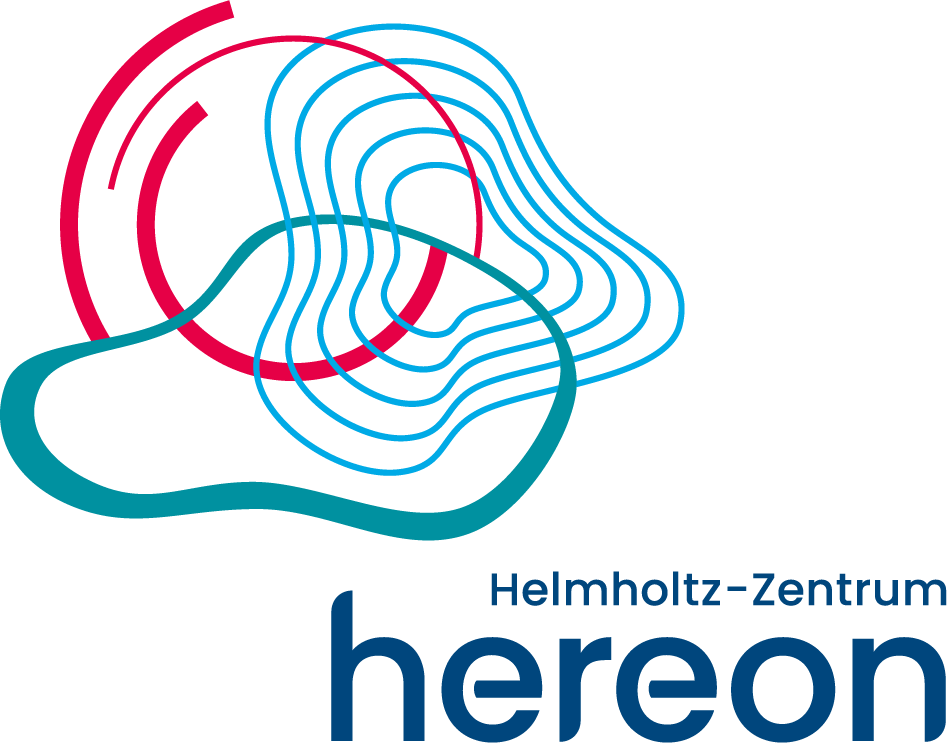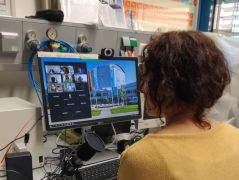MLZ is a cooperation between:
 > Technische Universität München
> Technische Universität München > Helmholtz-Zentrum Hereon
> Helmholtz-Zentrum Hereon
 > Forschungszentrum Jülich
> Forschungszentrum Jülich
MLZ is a member of:
 > LENS
> LENS > ERF-AISBL
> ERF-AISBL
MLZ on social media:

MLZ (eng)
Lichtenbergstr.1
85748 Garching
30.04.2025
Girls‘ power at the neutron source
24 girls between the ages of 14 and 18 responded to this call on the nationwide Girls’ Day on April 3, 2025 and visited the Heinz Maier-Leibnitz Zentrum in Garching. There, they learned about what can be researched using neutrons first-hand from the female scientists.

A group of the totally 24 girls with their guides Dr. Tobias Neuwirth (l.) and Veronika Reich (4th from right). © FRM II / TUM
In her introductory lecture, PhD student Veronika Reich briefly explained how the neutron source works and what research is carried out here. This was followed by a “scavenger hunt” around the site. At the individual stations, the girls learned from Veronika Reich and the two physicists Dr. Neelima Paul and Dr. Petra Kudejova what neutron research contributes to mobility, the environment, health, culture, energy and technology. At the technology station, scientist Dr. Tobias Neuwirth impressed the visitors with an experiment on material properties: various metal rods were pulled apart with great force until they tore.
View into the reactor pool
The highlight was the view of the reactor hall and the reactor pool from a height of 17 meters from the visitor window. There the girls learned, among other things, how neutrons from the FRM II are used in medicine, namely for cancer diagnostics and therapy, and why neutrons contribute to better cell phones.

One of the girls uses the glove box in Tabea Bartelt's chemistry lab. This is harder than it looks, as the box is filled with pressurized argon gas to protect sensitive substances from oxygen. © FRM II / TUM
How do the neutrons get to the instruments?
The next stop was the neutron guide hall, where the young scientists learned how the neutrons get from the fuel element to the instruments, and how and what the scientists there use the neutrons for research.
Fun with the glove box
In the chemistry lab, Tabea Bartelt showed the girls her job as a chemical-technical assistant in a research lab. They had great fun trying to handle the rubber arms in a glove box and measure the natural radiation of ceramic tiles, granite and old clocks.
In the end, everyone agreed that this was not the last time they would visit the research neutron source. Some of them want to do an internship at the FRM II next.
MLZ is a cooperation between:
 > Technische Universität München
> Technische Universität München > Helmholtz-Zentrum Hereon
> Helmholtz-Zentrum Hereon
 > Forschungszentrum Jülich
> Forschungszentrum Jülich
MLZ is a member of:
 > LENS
> LENS > ERF-AISBL
> ERF-AISBL
MLZ on social media:





